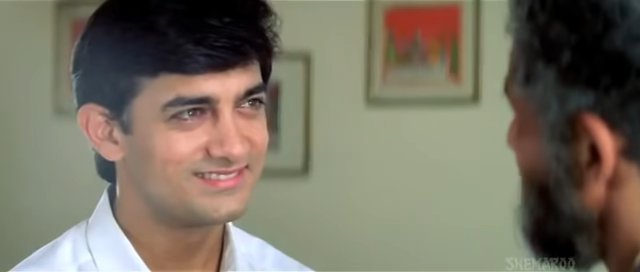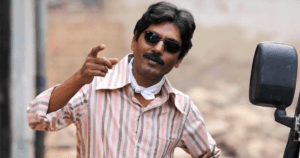Hoshwalon Ko Khabar Kya, a romantic ghazal, remains one of Bollywood’s most cherished melodies. As a kid, I recall hearing this song for the first time on some Hindi music shows from the ’90s, possibly Chitrahaar or Rangoli.

I also remember wanting to see the movie that featured the track, but you could only rely on TV for movies back then. So there was no means of googling the song, learning it’s from Sarfarosh, and then logging into the OTT platform that had the film. That’s something we can easily do now, but I could only watch the movie when I was in my teens.
That was preferable since I could finally grasp the true meaning as to why Ajay Singh Rathore (Aamir Khan) gazed longingly at Seema (Sonali Bendre).


What I realised decades later, after the film had been released, is that the John Matthew Matthan directorial is perhaps one of the best cop dramas Bollywood has ever offered us.
After being acquainted with the rapidly growing genre of cop dramas, the groundwork of which was probably laid by the Dabbang series, I had this epiphany. These cop-flicks basically rely on officers stepping out of moving cars with ease or delivering over-the-top dialogues to overwhelm theatres with cheers.
We’ve all seen the movies that fall into this trend, most famously Rohit Shetty’s cop-universe, which includes Singham, Simmba, and the latest blockbuster Sooryavanshi.

The penchant for cop dramas in Hindi cinema has existed since the beginning of the industry. Ardh Satya, Shool, Yeshwant, and Khakee are some of the finest works that come to mind.

But with the passing years, the audience and filmmakers acquired a taste for hulky cops fighting crime in the city, as if to make up for the lack of (good) superhero flicks in Bollywood.
That’s one of the many ways in which the Aamir Khan starrer is a total winner. As the film treats its protagonist, ACP Ajay Singh Rathore, like any other individual. Mostly because he’s depicted as a human, not a super-being who jumps off flying cars or throws a barrage of punches. Rather the warmth of the character is depicted through his growing friendship with Gulfam Hassan, a famous Pakistani singer, portrayed by Naseeruddin Shah.


Khan’s character is easily one of the best fictional cops and the 1999 release and also one of his most brilliant works. Ajay smoothly shifts from a bright student to a stern police officer as the film begins. The seriousness of the character is effectively conveyed through his devotion to his job, with no superfluous action, flying punches, or heavy speeches.

The well-written protagonist is embodied with maturity and genuine patriotism, rather than resorting to utterly pointless jingoism and hyper-masculinity. And Aamir’s captivating performance is enough to keep one hooked to the film, so it lacks unneeded frills. Despite being a quintessential masala movie, it was far away from the undue dramas that are synonymous with cop flicks.
With a tight and thoughtful narrative, Sarfarosh offers a glimpse into the underbelly of crime and an inside look at how investigations are conducted. The film stays rooted in its complex premise and the intricacy of its characters without sliding into action film cliches. The plot isn’t carried away by the cop’s heroic reputation; instead, it remains focused on the subject.

Like most Bollywood movies, Sarfarosh contains a good blend of romance, action, drama, and tragedy. But, it balances the flavors so nicely that none of them are overbearing, which is unusual in this sub-category of films.
The film taps into the subplot, which is the blossoming romance between Ajay and Seema, by playing iconic love ballads in the backdrop. Who wouldn’t want to run into an old crush as he does in the movie? Although their love story is compelling enough to have its own film, the depiction of Sonali’s character is the focus here.

There’s no denying that recent cop dramas are guilty of reducing female characters to nothing more than the ‘lover’ of a heroic man. They sing and dance with the hero and then disappear from the screen only to reappear when he needs to hold her hand and walk into the sunset.
On the contrary, Sonali’s character is not given a brief or replaceable role while being presented as the quintessential girlfriend. Apart from being in love with Rathore, the writers succeed in giving her own distinct identity.

Additionally, Gulfam Hasan, played by Naseeruddin Shah, is a memorable role for his nuances and humanisation of a dark character. Sarfarosh, unlike many other nationalistic films, did not attempt to paint Pakistanis as foes. In fact, the film starts off with a cultural exchange, showcasing the commonality.


Furthermore, the film stands out for brilliantly utilising its cast, something that many Bollywood films fail to do. The roles of the supporting cast are equally as well-crafted and layered as the main characters.
A perfect package of a well-crafted narrative, marrying crime, mystery, drama, vengeance, and love, Sarfarosh remains one of the finest, massy cop-dramas. Not just because it’s from the ’90s, but because it’s everything that current-age cop-dramas aren’t, with logic and story taking a backseat, as an unimaginably heroic cop takes centre stage.

















